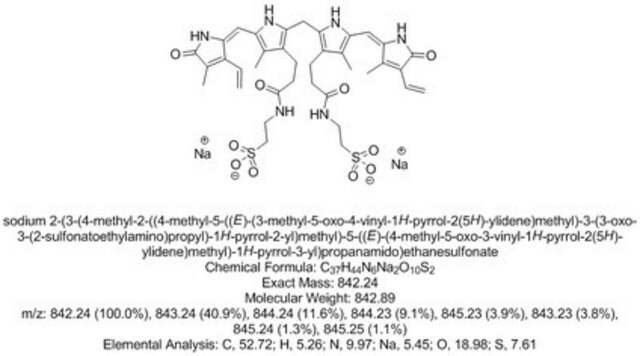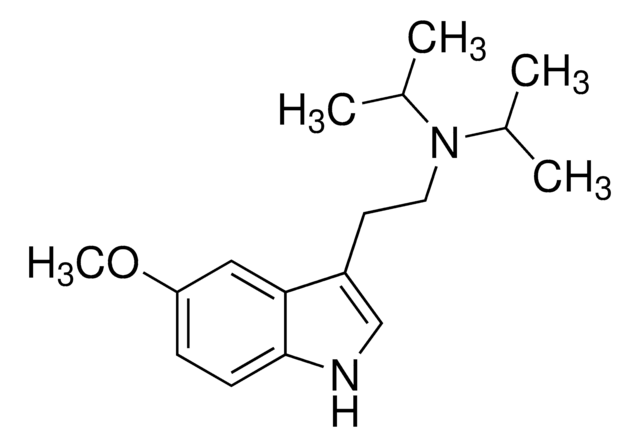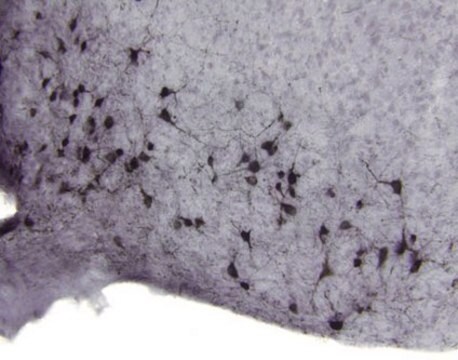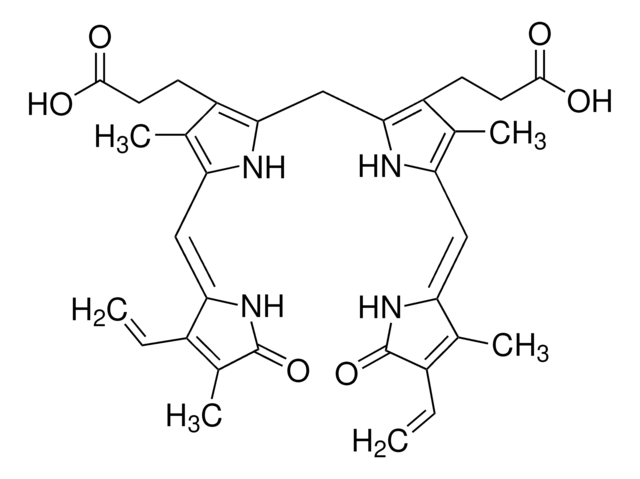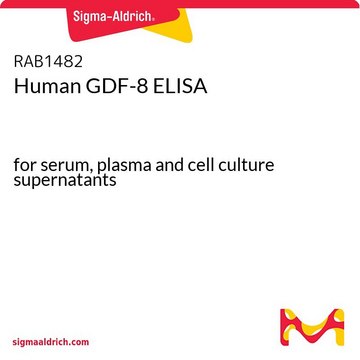M3064
Myostatin human
recombinant, expressed in E. coli, lyophilized powder, suitable for cell culture
Synonym(e):
Growth Differentiation Factor - 8
Anmeldenzur Ansicht organisationsspezifischer und vertraglich vereinbarter Preise
Alle Fotos(1)
About This Item
Empfohlene Produkte
Biologische Quelle
human
Qualitätsniveau
Rekombinant
expressed in E. coli
Assay
≥95% (SDS-PAGE)
Form
lyophilized powder
Mol-Gew.
16 kDa (including a 31 amino-acid spacer and 6-His tag)
Verpackung
pkg of 0.1 mg
Methode(n)
cell culture | mammalian: suitable
UniProt-Hinterlegungsnummer
Lagertemp.
−20°C
Angaben zum Gen
human ... MSTN(2660)
Anwendung
Use recombinant myostatin to study its mechanisms of action in vitro.
Biochem./physiol. Wirkung
Myostatin is a 25 KDa, homodimer, that acts on muscle to induce SMAD family transcription factors such as SMAD2 and SMAD3. It inhibits the differentiation of myoblasts into mature muscle fibers. Positive control for myostatin in Western blots and ELISA.
Positive control for myostatin in Western blots and ELISA.
Lagerklassenschlüssel
11 - Combustible Solids
WGK
WGK 3
Flammpunkt (°F)
Not applicable
Flammpunkt (°C)
Not applicable
Persönliche Schutzausrüstung
Eyeshields, Gloves, type N95 (US)
Hier finden Sie alle aktuellen Versionen:
Besitzen Sie dieses Produkt bereits?
In der Dokumentenbibliothek finden Sie die Dokumentation zu den Produkten, die Sie kürzlich erworben haben.
Karima Relizani et al.
Molecular therapy : the journal of the American Society of Gene Therapy, 22(8), 1423-1433 (2014-05-28)
Myostatin regulates skeletal muscle size via the activin receptor IIB (ActRIIB). However, its effect on muscle energy metabolism and energy-dependent muscle function remains largely unexplored. This question needs to be solved urgently since various therapies for neuromuscular diseases based on
H Takahashi et al.
Domestic animal endocrinology, 48, 62-68 (2014-06-08)
The purpose of this study was to determine whether myostatin alters glucose transporter-4 (GLUT4) expression in bovine skeletal muscles and myoblasts isolated from double-muscled (DM) and normal-muscled (NM) Japanese Shorthorn cattle. Plasma concentrations of glucose were lower in DM cattle
Qiang Zhang et al.
The FEBS journal, 277(2), 466-476 (2009-12-18)
The ubiquitin ligase RING finger protein 13 gene (RNF13) was first identified in a screen for genes whose expression is regulated by myostatin in chicken fetal myoblasts. In this study, we demonstrate that the RNF13 gene is broadly expressed in
R E Ferrell et al.
Genomics, 62(2), 203-207 (1999-12-28)
Myostatin is a recently identified member of the transforming growth factor-beta family of regulatory factors, also known as growth and differentiation factor 8 (GDF8). The nucleotide sequence of human myostatin was determined in 40 individuals. The invariant promoter contains a
Yutaka Ohsawa et al.
PloS one, 10(7), e0133713-e0133713 (2015-08-01)
Myostatin, a muscle-specific transforming growth factor-β (TGF-β), negatively regulates skeletal muscle mass. The N-terminal prodomain of myostatin noncovalently binds to and suppresses the C-terminal mature domain (ligand) as an inactive circulating complex. However, which region of the myostatin prodomain is
Unser Team von Wissenschaftlern verfügt über Erfahrung in allen Forschungsbereichen einschließlich Life Science, Materialwissenschaften, chemischer Synthese, Chromatographie, Analytik und vielen mehr..
Setzen Sie sich mit dem technischen Dienst in Verbindung.

